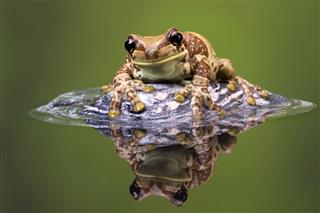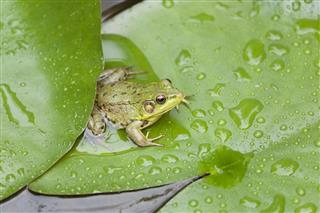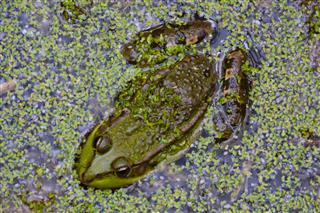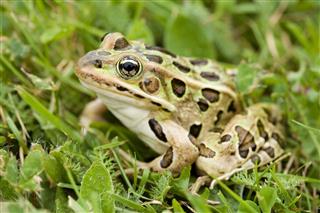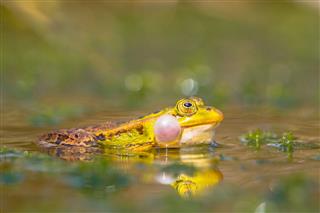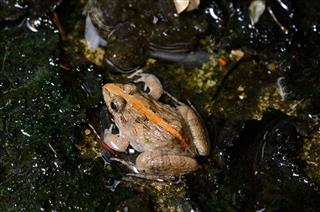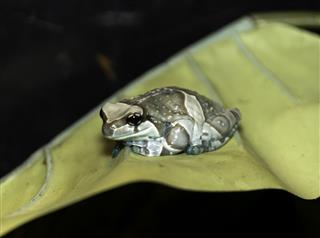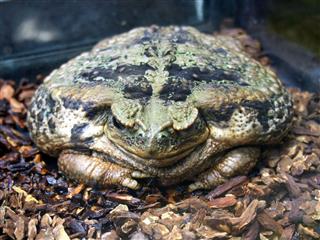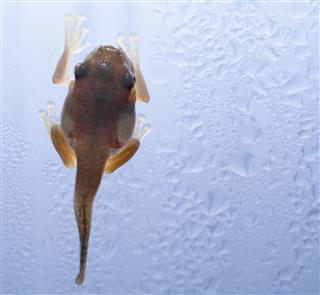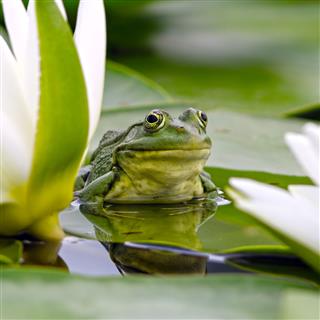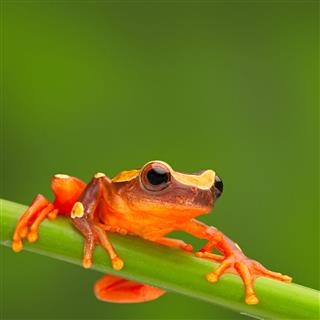
Frogs are amphibians, which means that they typically live on land but breed underwater. So, what is the habitat of a frog? They are generally near a water body. This article will describe the natural frog’s habitat, the commercial aquarium habitat, and will guide you on how to make your garden into a favorable environment for these amphibians.
Did You Know?
Frogs form an important part of the ecological system as they feed on bugs, and serve as food for many predators such as birds. However, due to chemical pollution and the destruction of wetlands for construction purposes, there is a huge decline in their habitat.
There are over 5,000 species of frogs (and still counting). One of the groups include the poison dart frogs that are toxic and have interesting and vibrant color patterns on their bodies. There is another species called green tree frogs that are translucent green in color, and if you see their belly down on a piece of glass, you can watch the internal organs and the heart of the frog! The huge range of this species can be found all over the world, and hence, there are different habitats, but frogs are generally seen near semi-aquatic lands.
Frog Habitat

Frogs, being amphibians, begin their lives in water, moving onto lands in their adulthood. Having said that, there are various species of frogs that don’t follow the cycle – some are adapted to live on trees, while some spend their lives in the water throughout.
Those dwelling in desert areas burrow into the ground and go into the dormant state during the dry season. This state is called estivation; they return in the rainy season. While those living in colder regions undergo hibernation in winters – burrowing into mud, or underneath the foliage litter. Some also freeze in colder climates and get thawed in the spring. This is their outstanding adaption to varying climates.
Since the lifecycle of a frog is proportional to its habitat, let’s consider it in detail.
Interrelation Between the Life Cycle and Habitat

- The egg mass is laid in water by frogs. With different species, the eggs can differ in number, size, and shape.
- In a few weeks’ span (number depending on the species), the eggs turn into tadpoles (a.k.a. polliwogs), which thrive underwater. These tend to cling to the pondweed.
- Tadpoles have external gills for breathing. They thrive on vegetable matter and algae in the pond.
- With the growth of a tadpole, the external gills vanish, or get replaced by internal gills. The tail grows gradually.
- Then, the tadpole develops hind legs, and eventually, the front legs, too. It is still comfortable in an aquatic region.
- Next, the metamorphosis process begins wherein the tail of the tadpole starts shrinking, and it develops into a froglet. It can now move beyond the pond life.
- In this process, the tail eventually vanishes, and the frog sees the transformation from being young to being an adult. This also results in its transformation from aquatic grounds to terrestrial lands. The area around the pond gives it a lot of fodder – insects, flies, slug – for its survival.
Natural Habitat
- Frogs are seen almost everywhere; they exist in rainforests, forests, and caves; they can also be seen in deserts and on hilltops.
- The best places for frogs are places that are mucky and have a lot of bugs. An interesting fact about frogs is that they have an extensible tongue, which has a sticky surface, and they can flick it quickly to catch a bug.
- Frogs are mostly seen in swamps, marshes, ditches, streams and puddles, as these places have plenty of muck and insects.
Habitat Requirements
- The ideal conditions for their habitat should have the right temperature for the eggs to hatch.
- It should be devoid of fast-moving water, and lots of rocks and stems should be present where they can lay their eggs.
- Besides water, frogs require a habitat that provides them with food and shelter. The tadpoles need algae, weed, and small plants to eat, while big plants provide good shelter to hide. These amphibians spend a lot of time in the water; they hide from danger or predators inside the water.
Creating a Habitat
Those very keen on keeping frogs as pets, especially kids, can go in for creating a habitat for them and petting them. You can buy a commercial frog aquarium for the kids or build all by yourself a frog habitat, and by creating the habitat you will be, in a way, helping the environment!

Aquarium Habitat
Creating a proper tank setup is very essential. Children can buy the commercial aquariums that are designed especially for frogs. These frog habitats or aquariums have interesting inbuilt materials. A quick gist about the types of tanks available in market, so that you can buy the one that is most suited to your frog species and its requirements.
Terrestrial tank: Terrestrial aquariums are apt for those that dwell in dry climates.
Aquatic tank: This tank is the general fish tank that has water in it. (It might get fishy if you clutter up with fish!)
Half-and-half tank: As the name goes, this has half water and half landmass setup, which will fit the bill for many species of frog.
Arboreal tank: These tanks are designed for tree frogs, which dwell on branches of trees.

Garden Habitat
Adults can create an environment for the frogs, or transform a section of their garden into a habitat for frogs. With the above-mentioned needs of the frogs, one will need to take care of other things too, to create and maintain a frog pond.
- Dig a pond and make sure the location is part-shaded and part-sunny, but not under a tree. The pond in the center should have 50 cm depth and the edges should be shallow and have a flat base.
- Cover the base with gravel, and place rocks, logs, and plants in and around the pond. Release some frogs in this pond.
This way, you will have your own frog pond in your garden and you can get to watch the life cycle of frogs.
